Looking for a dog you can teach to sit, stay, and chill in no time? Think again. Not all dogs are natural-born students. In fact, some of the world’s most fascinating and beautiful breeds are also among the hardest to train. Vets and trainers agree stubbornness, independence, strong prey drives, and sheer intelligence can all play a role in making training sessions a challenge. That doesn’t mean these breeds are unlovable—in fact, many are deeply affectionate, loyal, and brilliant at the jobs they were bred to do. But if you’re considering one of these dogs, you’ll need patience, consistency, and a strong sense of humor.
Reality Check on Pet Behavior
A quick reality check on the stakes: in behavior surveys and rehoming studies, pet-related issues (behavior/training) are often among the top reasons owners give up dogs, with one ASPCA analysis citing “pet problems” as the primary reason in roughly 46% of rehomings; more current consumer polling in 2024 pegged behavior/training issues at 24% of surrenders reported by respondents. Meanwhile, owner surrenders accounted for about 29% of shelter intakes in 2024—sobering reminders that choosing a breed that fits your lifestyle, and planning for training support, matter.
In this article, we’ll cover 25 breeds vets consistently rank as the hardest to train, explain why, and share tips that actually work.
#25 Afghan Hound
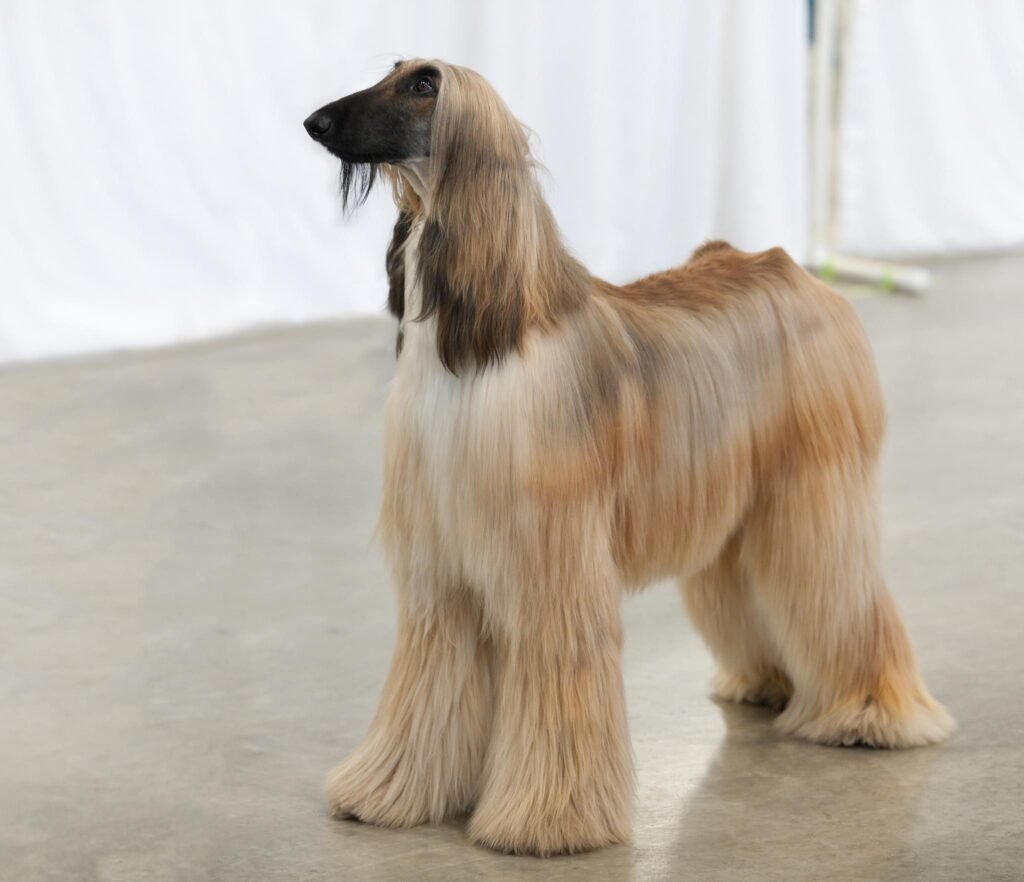
Meet the breed: The Afghan Hound is one of the oldest domesticated breeds, with roots tracing back thousands of years in the mountains of Afghanistan where they were bred to hunt large game like gazelles. Their flowing, silky coats, aristocratic bearing, and piercing eyes have made them a favorite in the show ring, but beneath that glamour is a powerful, athletic sighthound with an independent streak. Standing 25–27 inches tall and weighing up to 60 pounds, Afghans are elegant but aloof, preferring to bond deeply with one or two trusted humans rather than being social butterflies.
Why they’re tough: Afghans were bred to make decisions on the hunt without human direction. This independence makes them less inclined to obey commands simply because you said so. They also rank low on the classic obedience intelligence scale, not because they aren’t smart, but because they often ignore repetitive training. Their sensitive temperament means harsh corrections will shut them down, while distractions like squirrels can instantly steal their focus.
Make training easier: Keep sessions fun, short, and full of novelty. Afghans thrive when training feels like a game. Use high-value rewards—cooked chicken, tug toys, or a chance to sprint on a long line. Practice recalls in safe, enclosed spaces before ever trusting them off-leash. Patience, consistency, and respect for their sensitive nature go a long way.
According to VCA Vet Hospital: “Gentle, positive training laced with a goodly portion of patience will get the best results with this independent breed… If you want a dog who instantly obeys your every command, the Afghan Hound is not for you.”
#24 Basenji
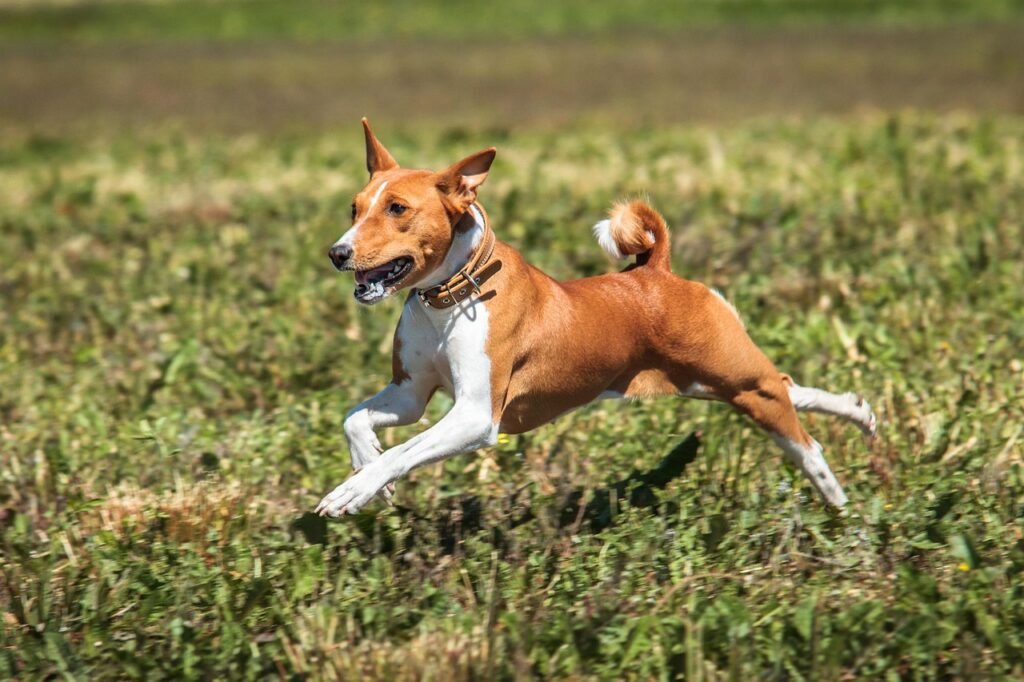
Meet the breed: The Basenji, often nicknamed the “barkless dog,” hails from Central Africa where it was prized for hunting in dense forests. Instead of barking, it produces a unique yodel-like sound known as a “baroo.” Compact, athletic, and incredibly clean (many owners compare them to cats), Basenjis are curious, mischievous, and independent-minded. They’re small—standing around 16–17 inches and weighing 22–24 pounds—but packed with energy and agility.
Why they’re tough: Basenjis are notorious for their stubborn streak and tendency to “outsmart” their owners. With strong prey instincts, they’ll chase anything that moves, and once their nose is on a trail, obedience becomes optional. Their intelligence can make them easily bored, leading to destructive behavior if not mentally stimulated. They often seem to ask, “What’s in it for me?” before following a cue.
Make training easier: Consistency and creativity are key. Rotate rewards—sometimes food, sometimes a game of chase, sometimes praise. Keep sessions under 10 minutes and incorporate movement-based training to match their athleticism. Secure fencing and long lines are essential outdoors. Scent games, puzzle toys, and trick training are excellent ways to channel their restless energy.
#23 Chow Chow
“Chow Chows… can be ropey dogs, … I would never give it too much trust. … Because they were bred as guard dogs, the Chow Chow can be aggressive with other dogs or strangers.” UK veterinarian Trainers Iain and Jacob.
Meet the breed: With its lion-like mane, deep-set eyes, and blue-black tongue, the Chow Chow is one of the most recognizable breeds in the world. Originating in ancient China, they were used as guard dogs, hunting dogs, and even companions to emperors. Today, they’re known as dignified, aloof companions who often bond strongly with one family member. Despite their plush, teddy-bear appearance, Chows are not cuddly lapdogs—they are independent, proud, and sometimes suspicious of strangers.
Why they’re tough: Chows are intelligent but stubborn, easily bored by drills. Heavy-handed methods backfire, patience and creativity win.
Make training easier: Start early socialization, keep sessions short and positive, and teach cooperative care (grooming, handling). Reinforce calm, polite behavior around guests; avoid confrontational tactics.
#22 Shiba Inu
Meet the breed: The Shiba Inu is Japan’s most popular companion dog and has become a global sensation thanks to its fox-like appearance and expressive face. Compact, agile, and incredibly self-assured, Shibas were originally bred for hunting small game in Japan’s mountainous regions. They’re spirited, bold, and clean—many even litter-train themselves like cats. Despite their small size (13–17 inches, 17–23 pounds), Shibas carry themselves with dignity and often act as if they own the world.
Why they’re tough: Shibas are famous for their independence and stubborn streak. They are not naturally eager to please and often ignore commands unless there’s something in it for them. Their strong prey drive makes them unreliable off-leash, and they’re prone to the dramatic “Shiba scream” when they don’t get their way. Many trainers note they’re one of the least biddable breeds, meaning they don’t naturally look to humans for direction.
Make training easier: Structure and management are key. Always use a harness and leash outdoors, and practice recalls with long lines. Make training engaging by using high-value rewards and varying the exercises. Shibas do well with trick training, agility, and short, upbeat sessions. Teaching consent-based handling (for grooming, nail trims, etc.) helps reduce the notorious Shiba stubbornness.
#21 Akita
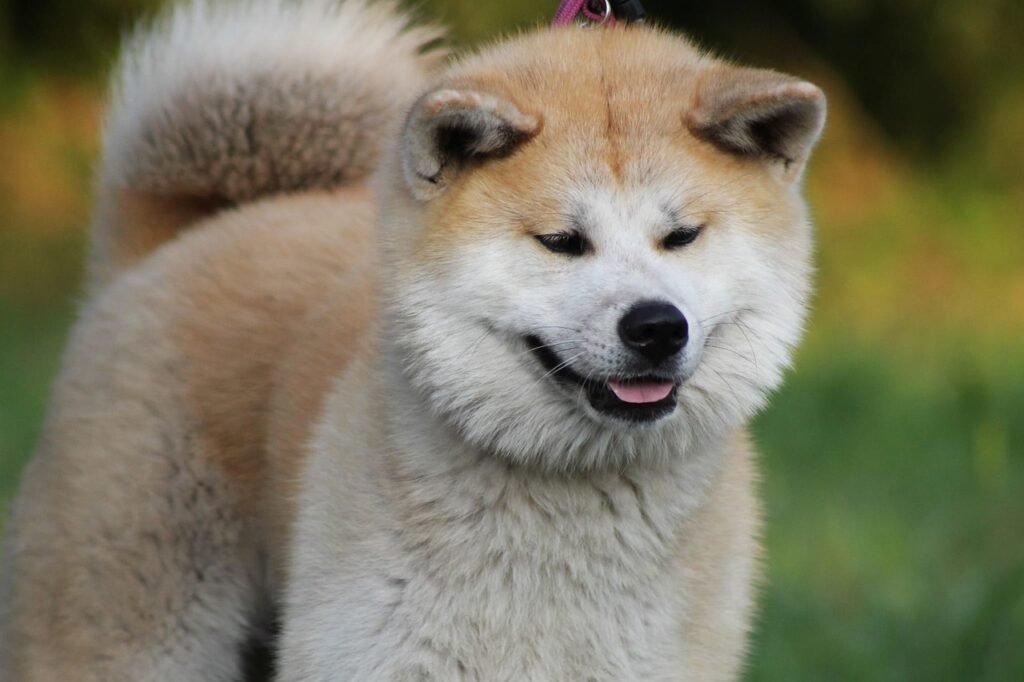
Meet the breed: The Akita is a large, powerful Japanese breed known for loyalty and dignity. Historically used for guarding and hunting large game like boar and bear, the Akita is imposing, muscular, and deeply bonded to its family. The most famous Akita, Hachikō, became a national hero in Japan for his unwavering loyalty, waiting at a train station daily for his deceased owner. Males can weigh up to 130 pounds, with females around 100 pounds, making them one of the larger spitz breeds.
Why they’re tough: Big strength, aloofness with strangers, and a cool, confident nature can challenge consistent response to cues—especially under distraction.
Make training easier: Start early, structured socialization, reinforce calm greetings, and make impulse control (place, down-stays) a daily ritual. Work with an experienced, rewards-based trainer.
#20 Alaskan Malamute
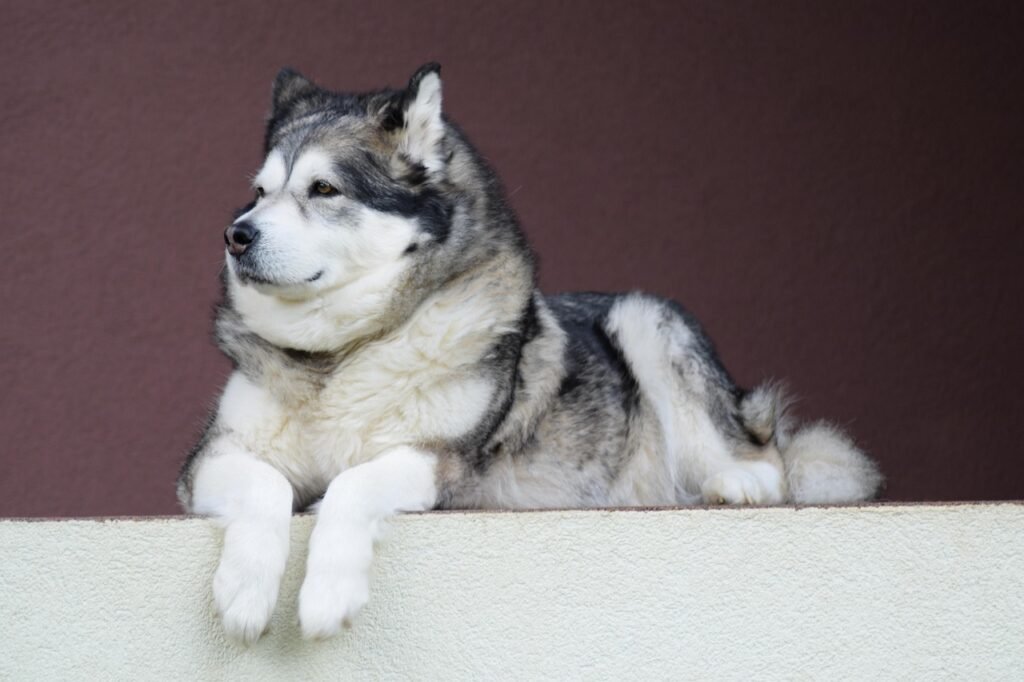
Meet the breed: The Alaskan Malamute is one of the oldest Arctic sled dogs, originally bred by the native Mahlemut people of Alaska to haul heavy freight across snow and ice. Unlike Siberian Huskies, who were bred for speed, Malamutes were built for power and endurance, capable of pulling large loads over long distances. Towering at 25 inches and weighing up to 85 pounds (with some males exceeding 100 pounds), they are imposing, wolf-like dogs with thick double coats suited to the coldest climates. Friendly, affectionate, and loyal, Malamutes often form deep bonds with their families but retain the independence of their working heritage.
Why they’re tough: Malamutes are famously strong-willed. Their natural instincts to roam, hunt, and work independently mean they can be stubborn and slow to obey commands. With high prey drive, many Malamutes are unreliable off-leash, and their incredible physical strength can overwhelm inexperienced owners. They also get bored easily, and when bored, they can be destructive—digging, chewing, or howling.
Make training easier: Malamutes respond well to training that challenges them both mentally and physically. Long hikes, pulling carts, or backpacking adventures are great outlets. Training sessions should be short, engaging, and reward-driven, with consistent rules across the household. Early leash training is essential—these dogs are powerful pullers. Incorporating sled or weight-pulling sports can also help satisfy their instincts while reinforcing obedience.
#19 Siberian Husky

Meet the breed: The Siberian Husky is perhaps the most iconic sled dog, instantly recognizable by its wolfish looks, striking blue or multicolored eyes, and thick coat. Originating from Siberia’s Chukchi people, these dogs were bred to pull light loads quickly over long distances. Huskies are medium-sized (35–60 pounds), athletic, and full of energy. They’re also notorious for being escape artists, capable of scaling fences or digging their way out of enclosures. Despite their mischievous nature, Huskies are friendly, affectionate, and social, often thriving in multi-dog households.
Why they’re tough: High arousal + wanderlust + prey drive often outbid food. Many Huskies are independent decision-makers outdoors.
Make training easier: Double-down on management (secure fencing, GPS collars), recall on a long line, and reward with movement (release to run, flirt-pole). Keep sessions short, joyful, and frequent.
#18 Beagle

Meet the breed: One of America’s most beloved breeds, the Beagle is a merry, affectionate scenthound originally bred for hunting rabbits and hare. Small to medium-sized (20–30 pounds), with long ears and soulful eyes, Beagles are excellent family companions. Their powerful noses contain about 220 million scent receptors (compared to 5 million in humans), giving them extraordinary tracking abilities. This skill makes them invaluable detection dogs in airports and law enforcement, but at home, it also makes them stubborn little scent machines who would rather follow their nose than listen to commands.
Why they’re tough: Beagles are incredibly food-motivated, but when on a scent trail, even food can become secondary. They’re prone to selective hearing and can wander off if given the chance, making off-leash training very difficult. Their tendency to bark, bay, or howl also complicates training in urban environments. Beagles are intelligent but easily distracted, and their independent streak makes them slow to respond to repetitive obedience drills.
Make training easier: Always keep Beagles leashed or in a secure area outdoors. Training should incorporate their natural talents—use scent games, treat hunts, and tracking exercises to keep them engaged. Positive reinforcement with food works best, but rewards must be immediate and consistent. Mental stimulation is just as important as physical exercise: puzzle toys, snuffle mats, and daily sniff walks help channel their instincts productively.
#17 Basset Hound
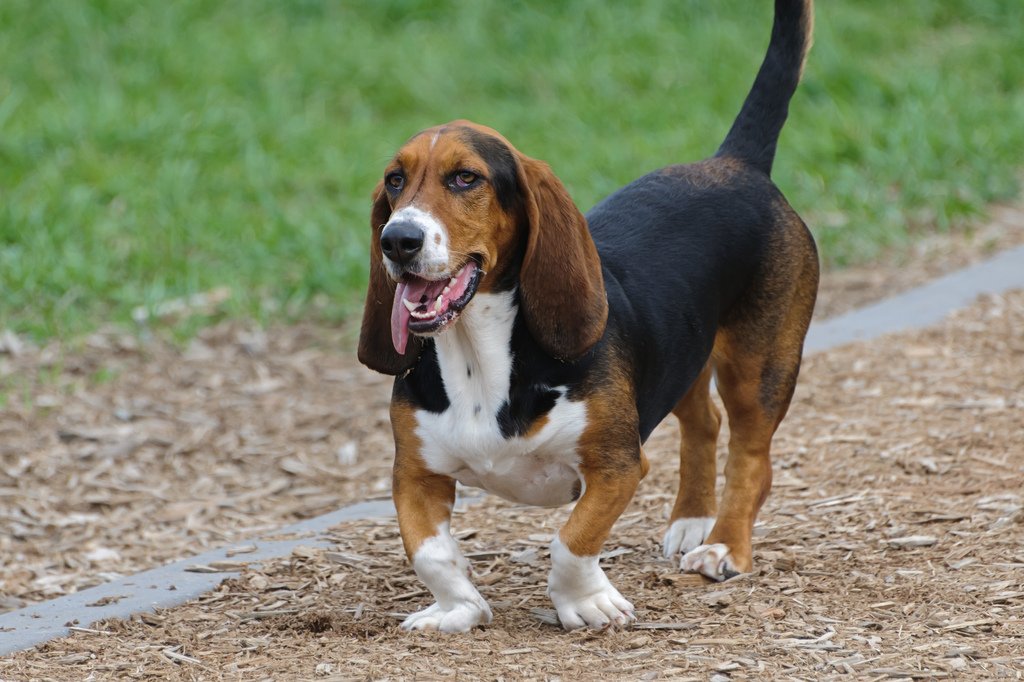
Meet the breed: With their long ears, droopy eyes, and short legs, Basset Hounds are instantly recognizable. Developed in France as slow-trailing scent hounds, they were bred to follow game at a steady pace while hunters followed on foot. Despite their comical appearance, Bassets are tenacious trackers with scenting abilities second only to the Bloodhound. Typically weighing 40–65 pounds, they are affectionate, loyal, and gentle family pets, though they often exude a laid-back, stubborn charm.
Why they’re tough: Scent obsession + low arousal to human cues can read as stubbornness. They’re also methodical movers; standard “sit, sit, sit” drilling doesn’t fit.
Make training easier: Reward with permission to track after a behavior (sit → “go sniff”). Keep sessions calm, patient, and scent-centric; practice “check-ins” for reinforcement.
#16 Bloodhound
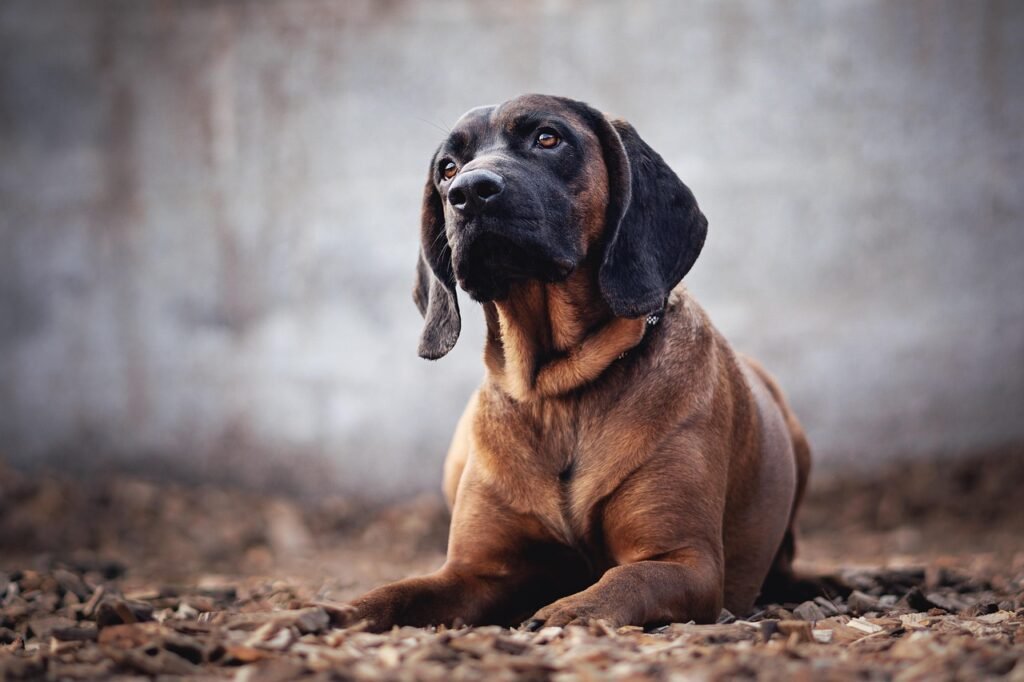
Meet the breed: The gold standard in trailing—world-class olfactory hardware. Bloodhounds are single-purpose geniuses; if there’s a scent, your cookie competes with the greatest dog entertainment on earth. Their long ears and wrinkled skin aren’t just for show—they help funnel scents toward their nose, which contains up to 300 million scent receptors (more than any other breed).
Why they’re tough: A Bloodhound on a scent is nearly impossible to redirect. Their persistence and focus make them incredible trackers but poor candidates for consistent obedience. Commands are easily ignored if something more interesting catches their nose. Their size and strength amplify the training challenge—once they’ve decided to follow a trail, they can pull even strong handlers off their feet.
Make training easier: Work the environment into your plan: loose-leash with sniff breaks, recalls that end in tracking games, and quiet, steady handling to prevent over-arousal.
#15 Black and Tan Coonhound

Meet the breed: Developed in the United States, the Black and Tan Coonhound is a versatile hunting dog known for its endurance and powerful sense of smell. Bred to trail raccoons and other game across rugged terrain, they have deep voices, long ears, and a sleek black-and-tan coat. Standing 23–27 inches tall and weighing 65–110 pounds, they are affectionate and good-natured at home but tireless on the trail. Their vocal baying can be both endearing and frustrating in suburban neighborhoods.
Why they’re tough: Like most coonhounds, they’re highly independent and bred to work at a distance from their handlers. This independence translates into stubbornness in training. Their drive to trail and bay can overpower basic obedience commands, and they are easily distracted by environmental scents. They also get bored quickly with repetitive training, preferring to self-entertain.
Make training easier: Use voice markers they can hear at distance, pay with hunt-like games, and practice settle after arousal (mat work, long down with chew).
#14 Treeing Walker Coonhound
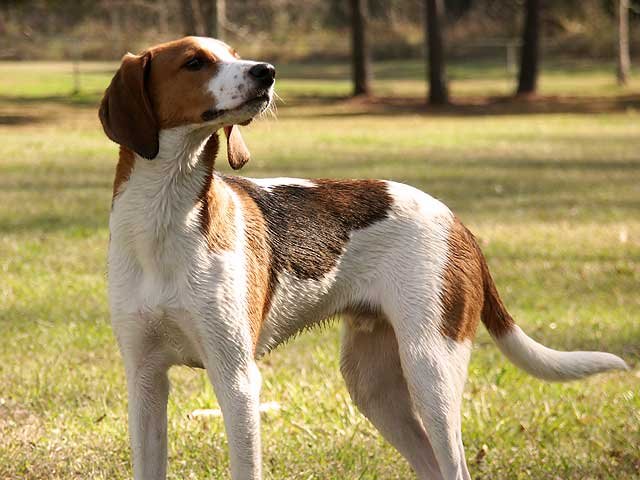
Meet the breed: Known as the “people’s choice” of coonhounds, the Treeing Walker Coonhound is an American-born breed developed from English Foxhounds in the 18th century. Bred for speed, stamina, and keen scenting ability, this dog excels at trailing raccoons and “treeing” them—cornering game until the hunter arrives. Sleek and athletic, Treeing Walkers stand 20–27 inches tall and weigh 50–70 pounds. They are affectionate, intelligent, and outgoing, with a distinctive musical bay that carries for miles.
Why they’re tough: Self-rewarding behaviors (running, baying) conflict with quiet household manners.
Make training easier: Give structured outlets (trailing lines, nosework trials), plus impulse-control drills between bursts of activity. Reinforce quiet and calm a lot.
#13 American Foxhound
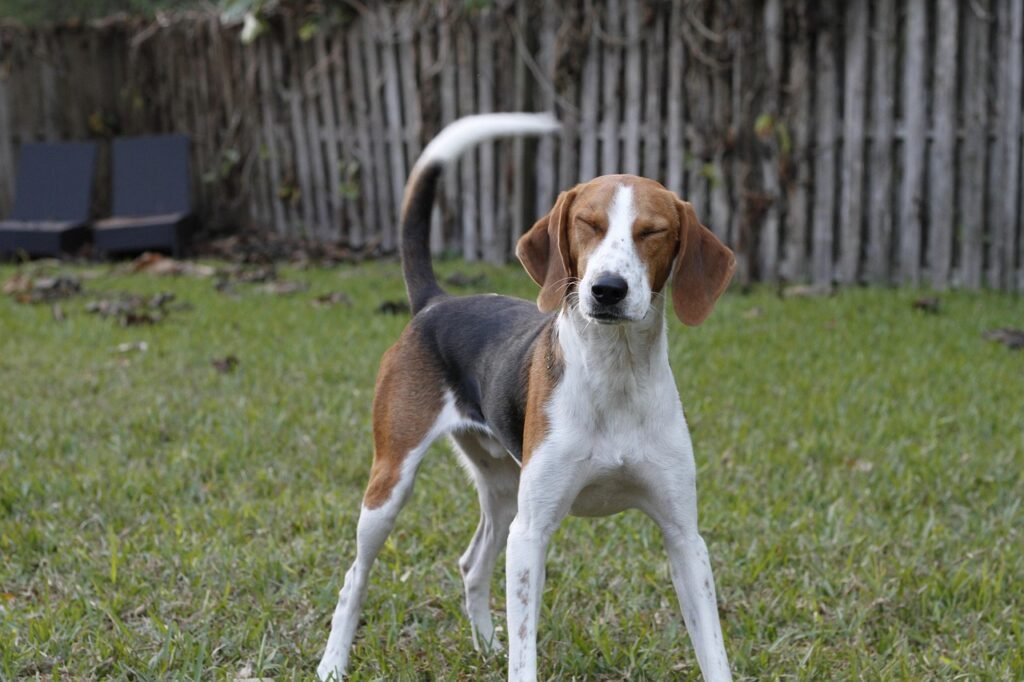
Meet the breed: The American Foxhound is one of the oldest American dog breeds, developed in colonial Virginia and Maryland for fox hunting. George Washington himself kept and bred Foxhounds. Sleek, tall, and athletic, they can weigh 60–70 pounds and stand up to 25 inches tall. With boundless energy and a melodious bay, Foxhounds are affectionate and gentle with families but thrive best in active, outdoor lifestyles where they can run and explore.
Why they’re tough: Athletic independence; obedience falls apart when a scent picture lights up.
Make training easier: Long-line recalls with moving rewards, secure fields for decompression runs, and foraging games indoors to meet nose needs.
#12 Borzoi
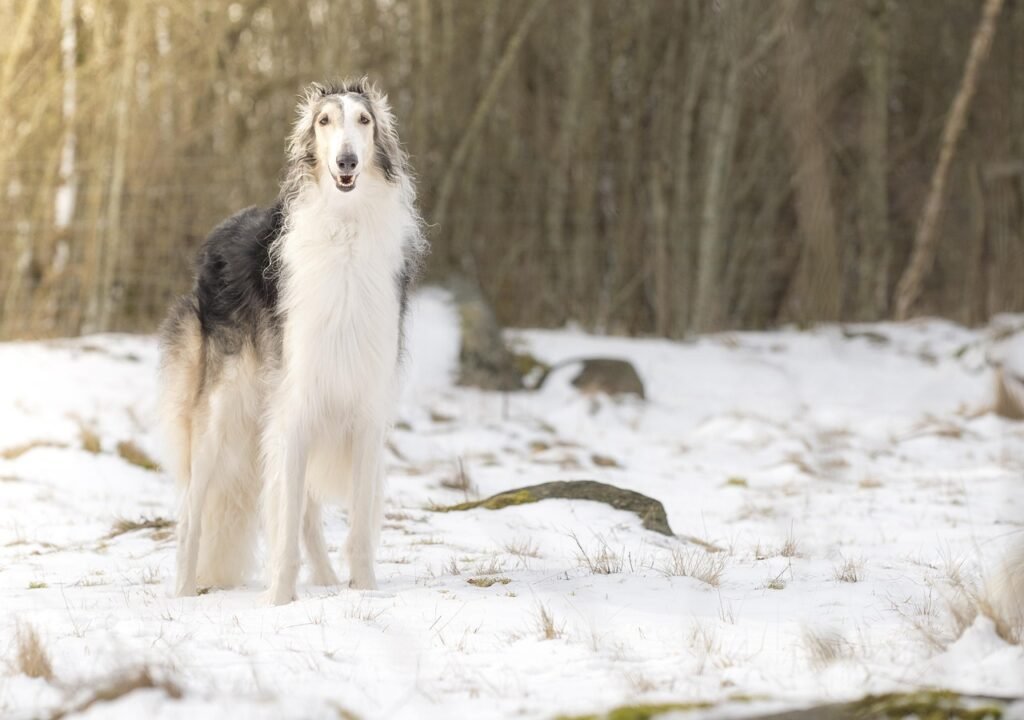
According to the American Kennel Club: “In their quiet, catlike way they can be stubborn, and training is best accomplished with patience, consistency, and good humor.”
Meet the breed: The Borzoi, also known as the Russian Wolfhound, is a tall, elegant sighthound bred by Russian aristocracy to hunt wolves and hare across open plains. With males standing 28–32 inches tall and weighing up to 105 pounds, Borzois are graceful, dignified, and aloof. Their long, flowing coats and calm demeanor make them a regal presence in any household. Despite their calm appearance, Borzois are lightning-fast sprinters with powerful chase instincts.
Why they’re tough: Low repetition tolerance and a serious chase reflex make traditional drilling ineffective.
Make training easier: Train behind visual barriers at first; pay with movement releases and keep sessions elegant and brief—like the dog.
#11 Scottish Terrier
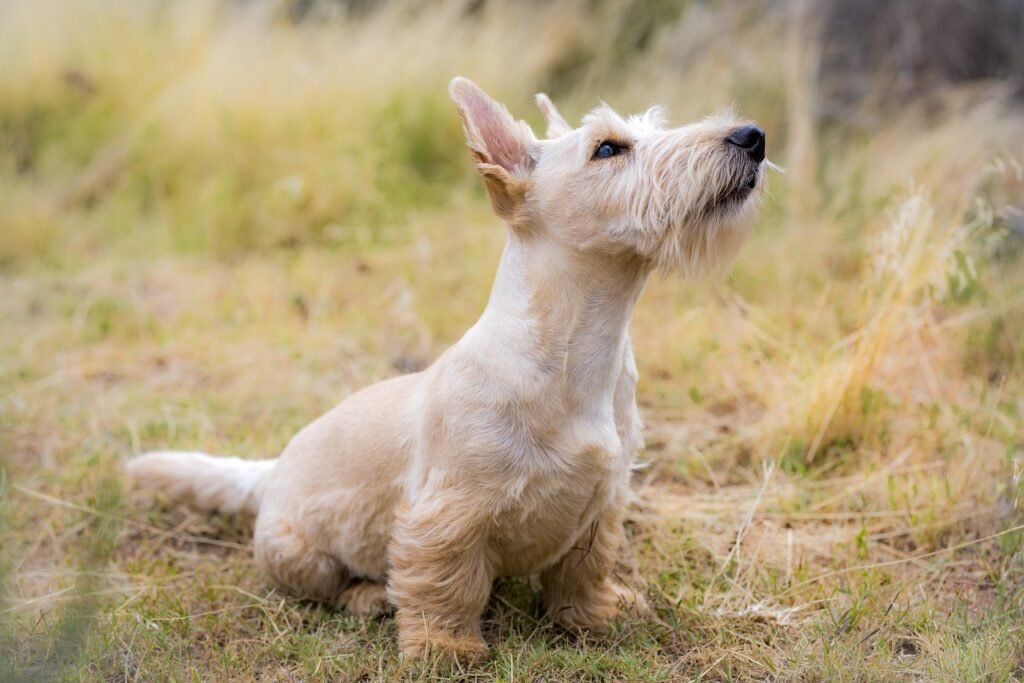
Meet the breed: Known affectionately as the “Scottie,” this small but mighty terrier hails from Scotland, where it was bred to hunt vermin such as rats and foxes. Compact at 10 inches tall and weighing 18–22 pounds, Scottish Terriers are spirited, courageous, and famously independent. Their wiry coat, distinctive beard, and bold stance make them instantly recognizable. They have a big-dog personality in a small frame, often taking charge of their environment with confidence.
Why they’re tough: As a true earthdog, Scotties were bred to go under and after—without waiting for permission—so handler focus can lag.
Make training easier: Five-minute “micro-sessions,” dig boxes for legal excavation, and target games to build engagement. Avoid nagging; celebrate quick wins.
#10 Jack Russell Terrier (Parson Russell Terrier)
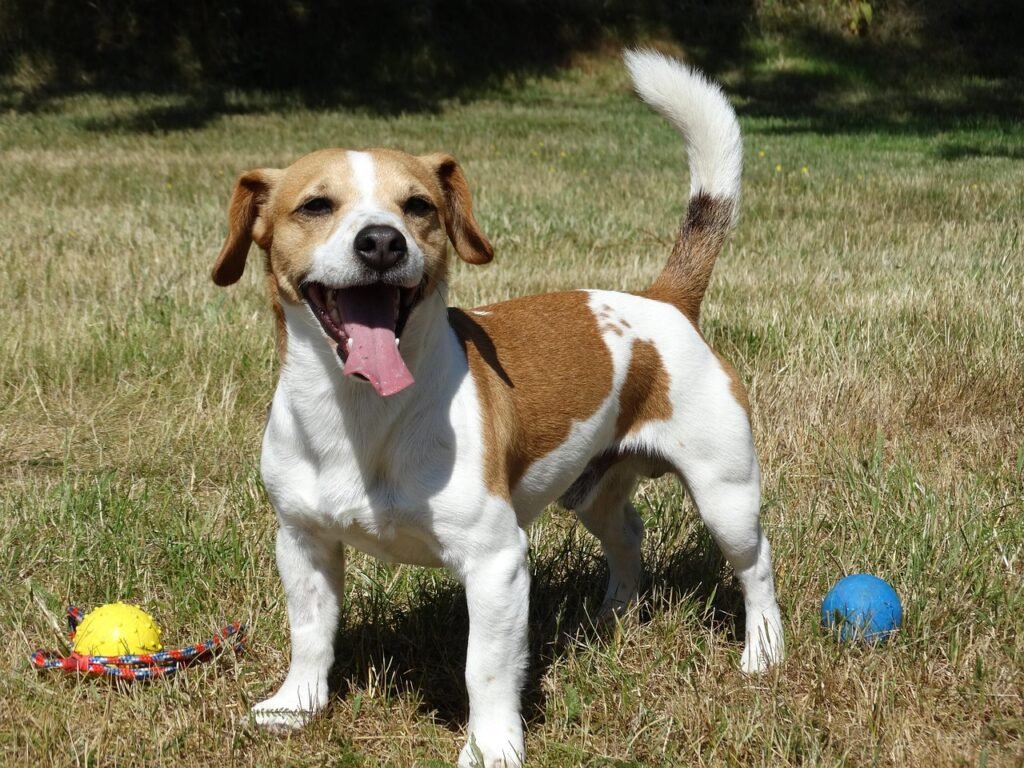
Meet the breed: Small in size but bursting with energy, the Jack Russell Terrier was developed in England for fox hunting. Standing 10–15 inches tall and weighing 13–17 pounds, Jack Russells are compact, athletic, and endlessly curious. Known for their boundless energy, intelligence, and playful personalities, they are charming but demanding companions. Their strong prey drive and fearless nature make them both entertaining and exhausting for inexperienced owners.
Why they’re tough: Explosive energy and prey drive can eclipse cue control; “down for 10 minutes” feels like a lifetime to them.
Make training easier: Front-load impulse control (waits, leave-its), then channel that electricity into flirt-pole outs and trick training that pays fast.
#9 Airedale Terrier
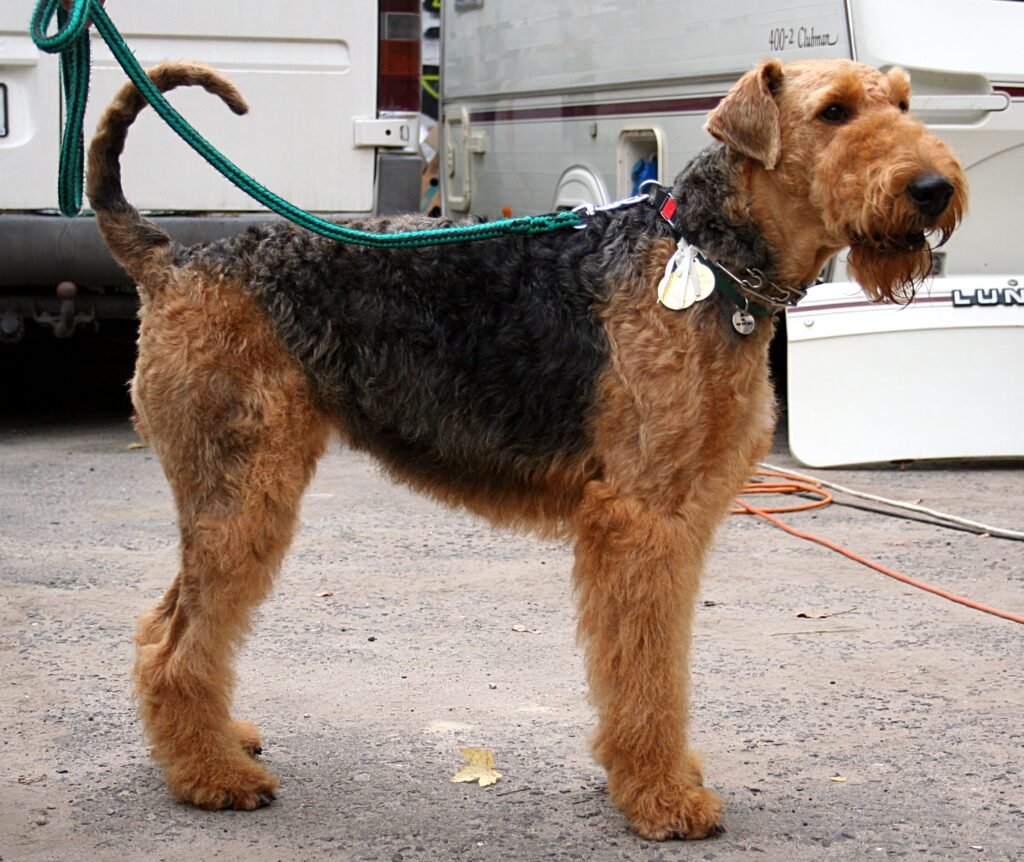
Meet the breed: Nicknamed the “King of Terriers,” the Airedale is the largest of the terrier breeds, originally bred in England’s Aire Valley to hunt otters and rats. Standing 21–23 inches tall and weighing 50–70 pounds, Airedales are intelligent, athletic, and versatile. Historically used as war dogs, police dogs, and hunters, they are bold, confident, and full of personality. Their wiry coats and upright ears add to their commanding appearance.
Why they’re tough: Airedales problem-solve and get bored. If training isn’t novel, they’ll invent tasks you didn’t request.
Make training easier: Rotate jobs (tracking day, rally day, swim day). Keep criteria clear, reward with tug or retrieves, and incorporate nosework to satisfy curiosity.
#8 Bullmastiff
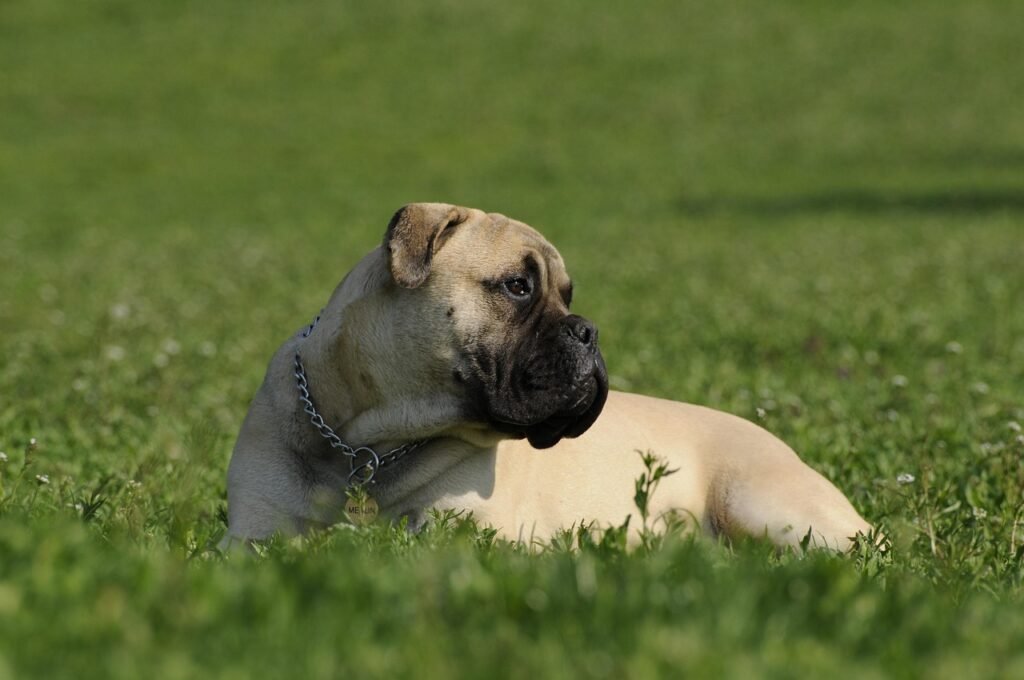
Meet the breed: The Bullmastiff is a powerful guardian breed developed in 19th-century England to protect estates from poachers. Crossing Mastiffs with Bulldogs created a dog with both strength and agility, capable of tackling intruders without inflicting fatal injuries. Today, Bullmastiffs stand 24–27 inches tall and can weigh up to 130 pounds, making them an imposing presence. Despite their intimidating looks, they are affectionate and loyal with their families, often described as gentle giants. Their calm, watchful nature makes them excellent companions in the right hands.
Why they’re tough: Low prey drive doesn’t automatically mean “easy.” Many Bullmastiffs are steady but willful, and handlers can unintentionally reinforce pushy behavior because of the dog’s size.
Make training easier: Prevent rehearsal of door-rushing with management; pay calm stationing (place cot). Use low-impact rewards (chews, massage) that fit their vibe.
#7 Mastiff (English Mastiff)
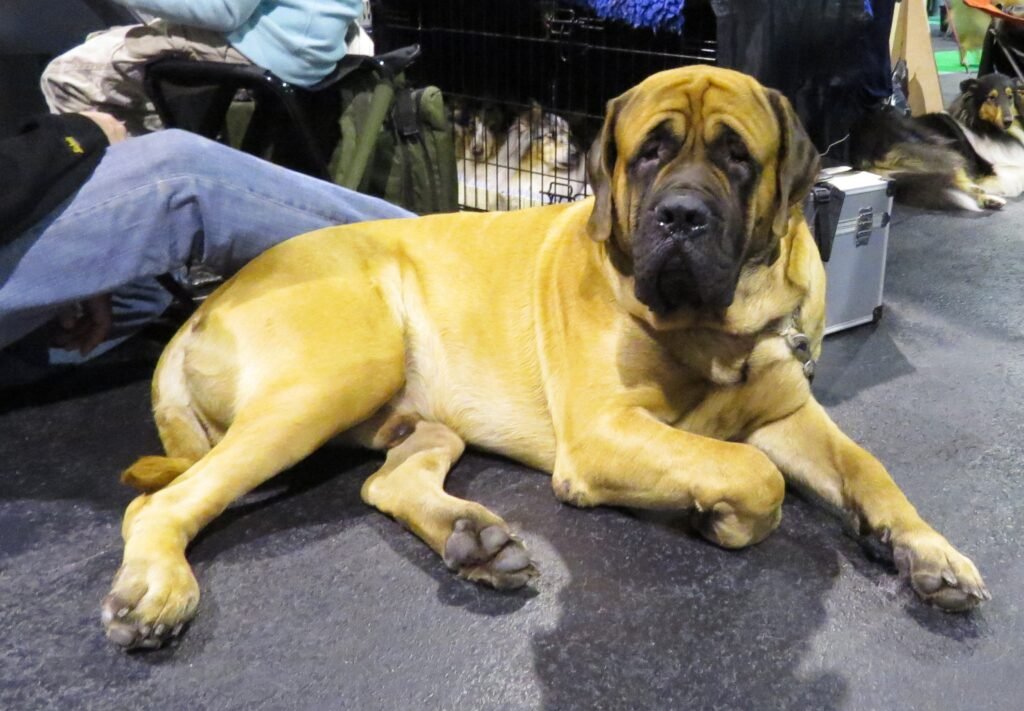
Meet the breed: The English Mastiff is one of the largest dog breeds in the world, with males often weighing over 200 pounds. Descended from ancient war dogs and estate guardians, Mastiffs are gentle giants known for their calm, steady demeanor. With a massive head, deep chest, and powerful frame, they are awe-inspiring in stature. Despite their size, Mastiffs are affectionate and devoted, often described as “loving shadows” who like to stay close to their humans.
Why they’re tough: Mass + momentum—if they decide not to move, you’re negotiating with a boulder; if aroused, you’re steering a freight train.
Make training easier: Teach cooperative care early, reinforce loose-leash micro-steps, and prioritize settle behaviors. Keep sessions short to match attention span.
#6 Great Pyrenees
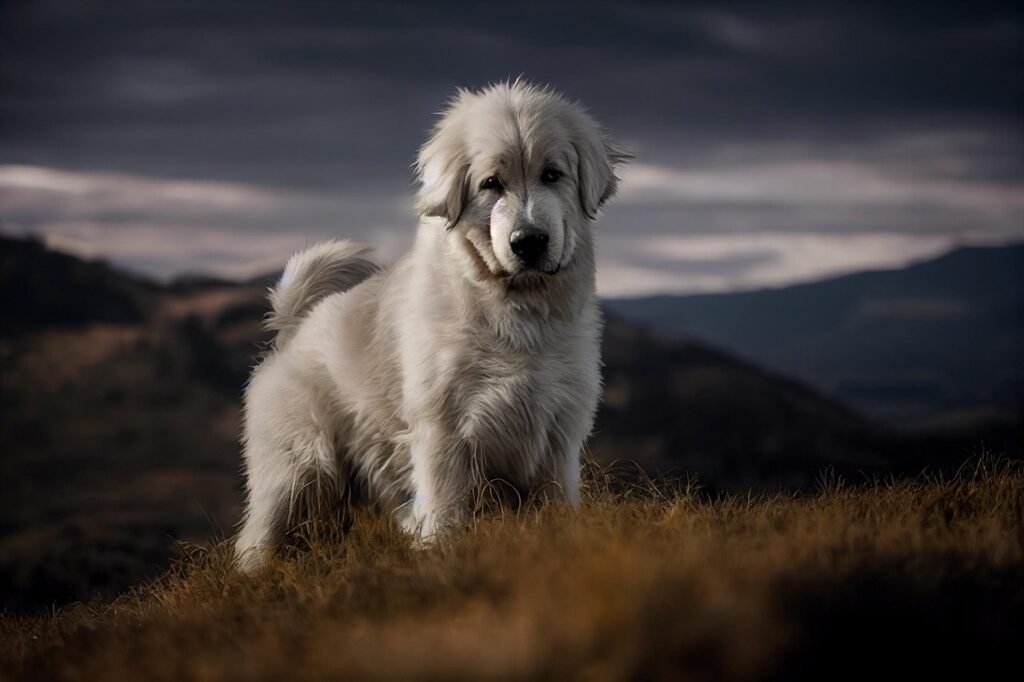
Meet the breed: The Great Pyrenees is a majestic livestock guardian originating from the Pyrenees Mountains of France and Spain. Known for their thick, weatherproof white coats, they were bred to independently protect flocks from predators such as wolves and bears. Standing up to 32 inches tall and weighing 85–115 pounds, Great Pyrenees dogs are gentle, patient, and affectionate with their families, but retain a serious working dog mentality. Their calm presence makes them good companions, but their independence sets them apart from typical obedient breeds.
Why they’re tough: They’re guardians by instinct, not training; handler control can feel optional outdoors in “their” domain.
Make training easier: Lean on management (secure yard, alarms for gate/door), reinforce boundary games (“This is home; you get paid to stay”), and keep recall on a long line backed by premium rewards.
#5 Anatolian Shepherd Dog
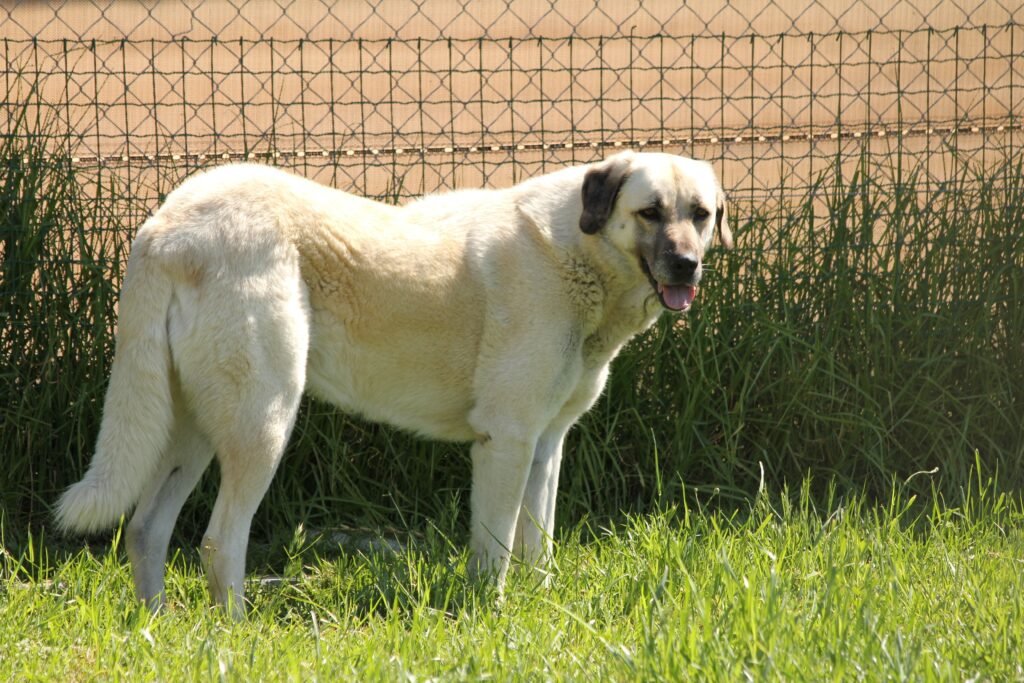
Meet the breed: Another ancient livestock guardian, the Anatolian Shepherd originates from Turkey, where they protected flocks from predators in harsh climates. Towering at 27–29 inches and weighing 90–150 pounds, Anatolians are imposing, powerful, and deeply protective of their families and territories. Calm, intelligent, and watchful, they have been bred for centuries to work autonomously without human supervision.
Why they’re tough: Low novelty interest in human tasks; strong protectiveness and territoriality require skilled, proactive handling.
Make training easier: Early, thorough socialization, clear house rules (no doorway blasting), and structured decompression walks. Professional guidance recommended for first-time guardian-breed owners.
#4 Kuvasz
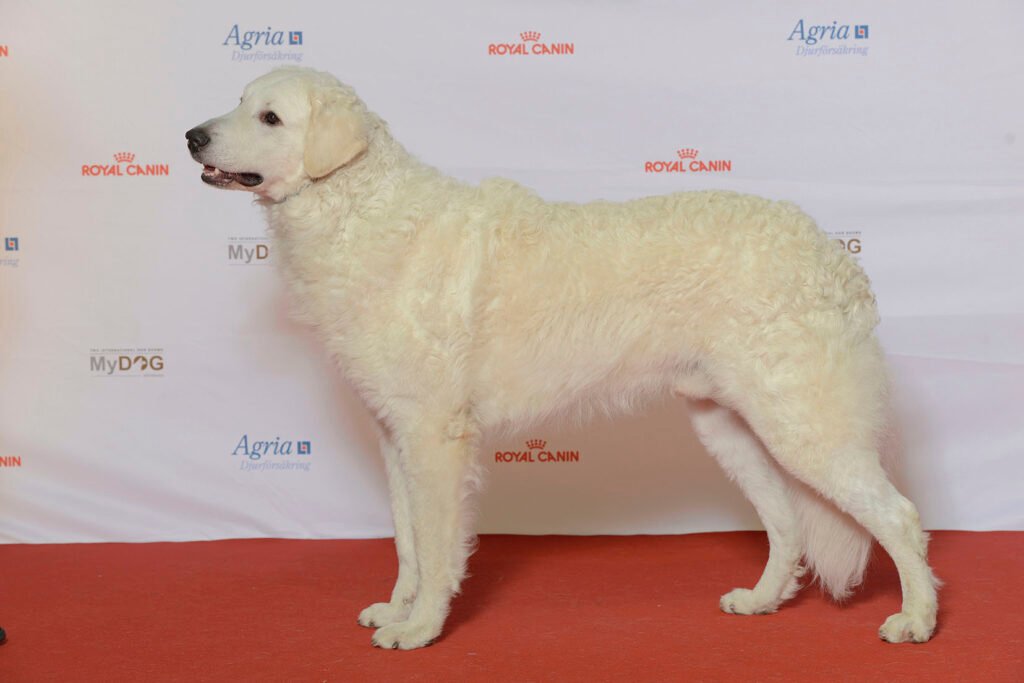
Meet the breed: The Kuvasz is a striking white livestock guardian from Hungary, with a long history as a royal protector and flock guardian. Large (weighing 70–115 pounds) and powerful, Kuvaszok are intelligent, courageous, and deeply bonded to their families. They are dignified, protective, and aloof with strangers, often described as having a serious and independent personality.
Why they’re tough: Kuvaszok bond deeply but think for themselves; routine obedience bores them, and forceful methods erode trust.
Make training easier: Use calm, predictable routines, build value for handler proximity (treat-and-retreat, moving jackpots), and teach grooming consent early due to coat care.
#3 Cane Corso

Meet the breed: The Cane Corso is an Italian mastiff breed, historically used for guarding property and hunting large game. Powerful, athletic, and muscular, they stand 24–28 inches tall and weigh 90–110 pounds. Despite their intimidating appearance, Cane Corsos are deeply loyal and affectionate with their families. They are intelligent, eager to work, and thrive when given a purpose.
Why they’re tough: Size, protective instincts, and adolescent pushiness mean inconsistent training can snowball into management issues.
Make training easier: Start young with reward-based obedience, enroll in well-run classes, and keep a jobs list (obedience routines, controlled protection sports with qualified pros, scent games) to give that big brain work.
#2 Rhodesian Ridgeback
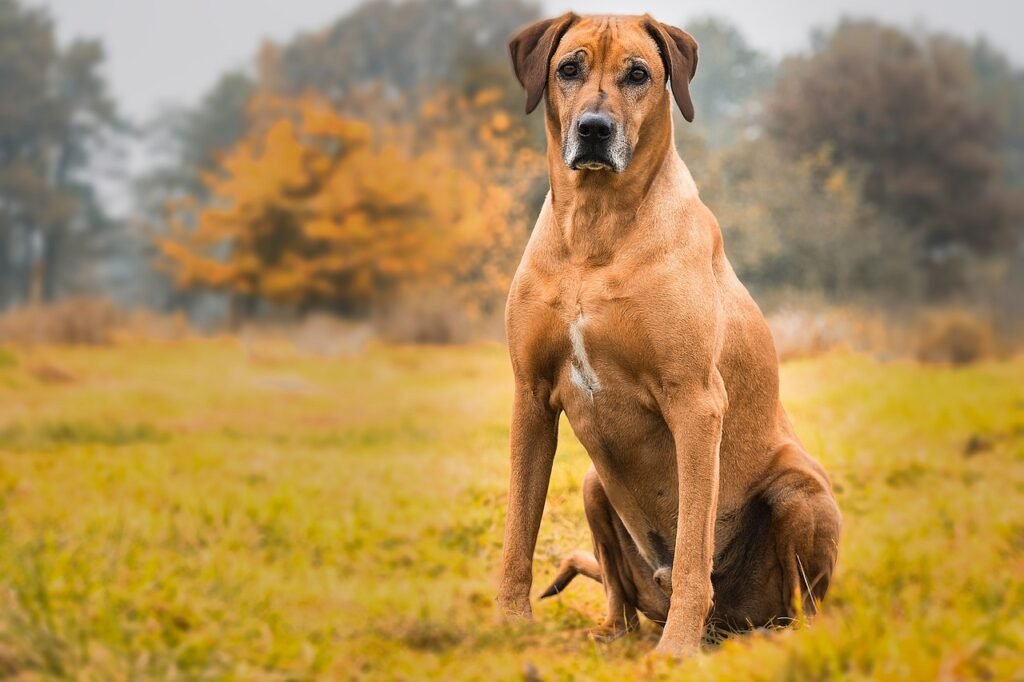
Meet the breed: Originally bred in southern Africa, the Rhodesian Ridgeback was developed to track and hold lions at bay until hunters arrived. Muscular, athletic, and dignified, Ridgebacks stand 24–27 inches tall and weigh 70–85 pounds. Their most distinctive feature is the ridge of backward-growing hair along their spine. Known for loyalty, independence, and strong prey drive, Ridgebacks are affectionate with family but aloof with strangers.
Why they’re tough: Independent, sensitive, and chase-prone, Ridgebacks can tune out obedience under motion triggers.
Make training easier: Use short, upbeat sessions, build bomb-proof recalls with long lines, and reward with controlled chase games (flirt-pole with clear “out” cues). Socialization + impulse control are non-negotiable.
#1 Chinese Shar-Pei
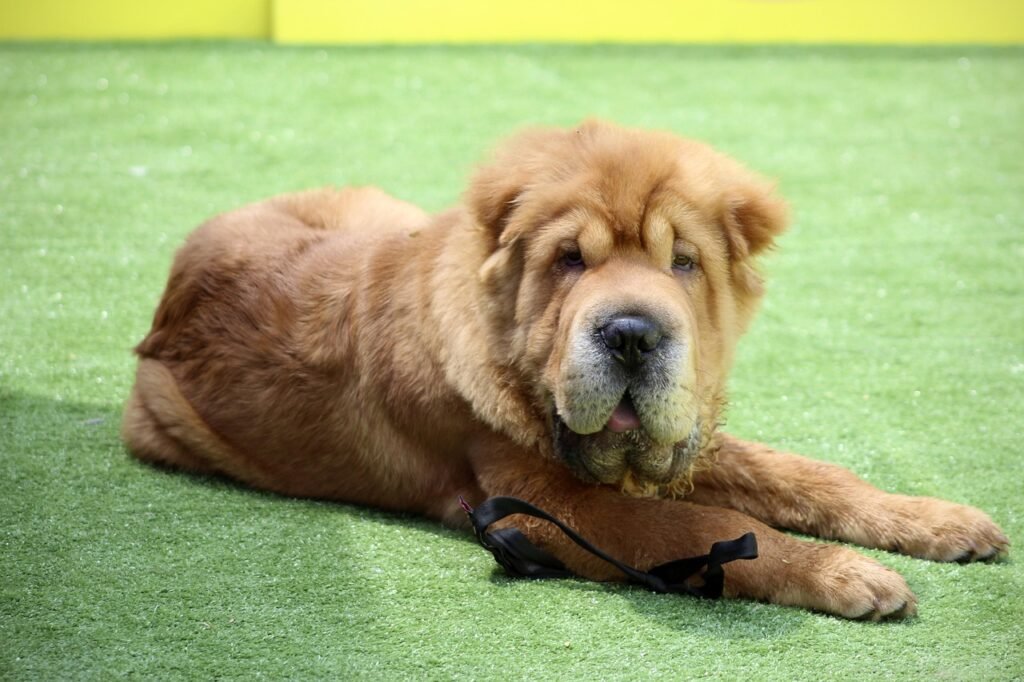
Meet the breed: The Chinese Shar-Pei is one of the most distinctive breeds, with its deep wrinkles, blue-black tongue, and hippopotamus-like muzzle. Originally bred as multipurpose farm dogs in southern China, they served as hunters, guardians, and herders. Medium-sized (45–60 pounds), Shar-Peis are loyal, calm, and deeply devoted to their families, but they are often aloof with strangers.
Why they’re tough: Confident and sometimes headstrong; harsh methods shut them down, while permissive handling invites pushy behavior.
Make training easier: Pair firm (not forceful) boundaries with high-value rewards, systematic socialization, and creative, short sessions that prevent boredom. Teach cooperative care for skinfold/ear maintenance from day one.
Pro Tips That Help With Any “Hard-to-Train” Breed
- Work with who they are. Hounds want to sniff; sighthounds want to move; guardians want clear boundaries and calm routines. Pay behaviors with the activities they crave. When the environment is the main competitor, make it the reward.
- Front-load impulse control. Daily “sit-waits,” door manners, and mat/place training reduce chaos and build default calm.
- Keep sessions short and surprising. Many of these breeds loathe repetition. Aim for 2–5 minute micro-sessions sprinkled through the day.
- Proof slowly. Move from quiet rooms → yard → quiet street → exciting park. Independence shows up under distraction—plan for it.
- Leverage biology. Nosework, tracking lines, flirt-poles, dig boxes, decompression hikes, and sniffy walks do more to improve compliance than another 30 minutes of sits.
- Ask for help early. A good positive-reinforcement trainer prevents little quirks from becoming surrender-level problems. In national data, pet-related (behavior/training) issues are a major driver of rehoming, so early support is smart, not indulgent.
Choosing a lower-compliance breed is not a deal-breaker—it’s a commitment. When you pair realistic expectations, the right outlets, and modern reward-based methods with these independent thinkers, you get something special: a dog who listens because you’ve earned their attention, not because you forced it. If you’re about to adopt, bookmark this guide and line up a trainer now; if you’re already in the thick of it, pick two ideas above and start today. Your future self (and your dog) will thank you.

Andrew Alpin from India is the Brand Manager of Doggo digest. Andrew is an experienced content specialist and social media manager with a passion for writing. His forte includes health and wellness, Travel, Animals, and Nature. A nature nomad, Andrew is obsessed with mountains and loves high-altitude trekking. He has been on several Himalayan treks in India including the Everest Base Camp in Nepal.






